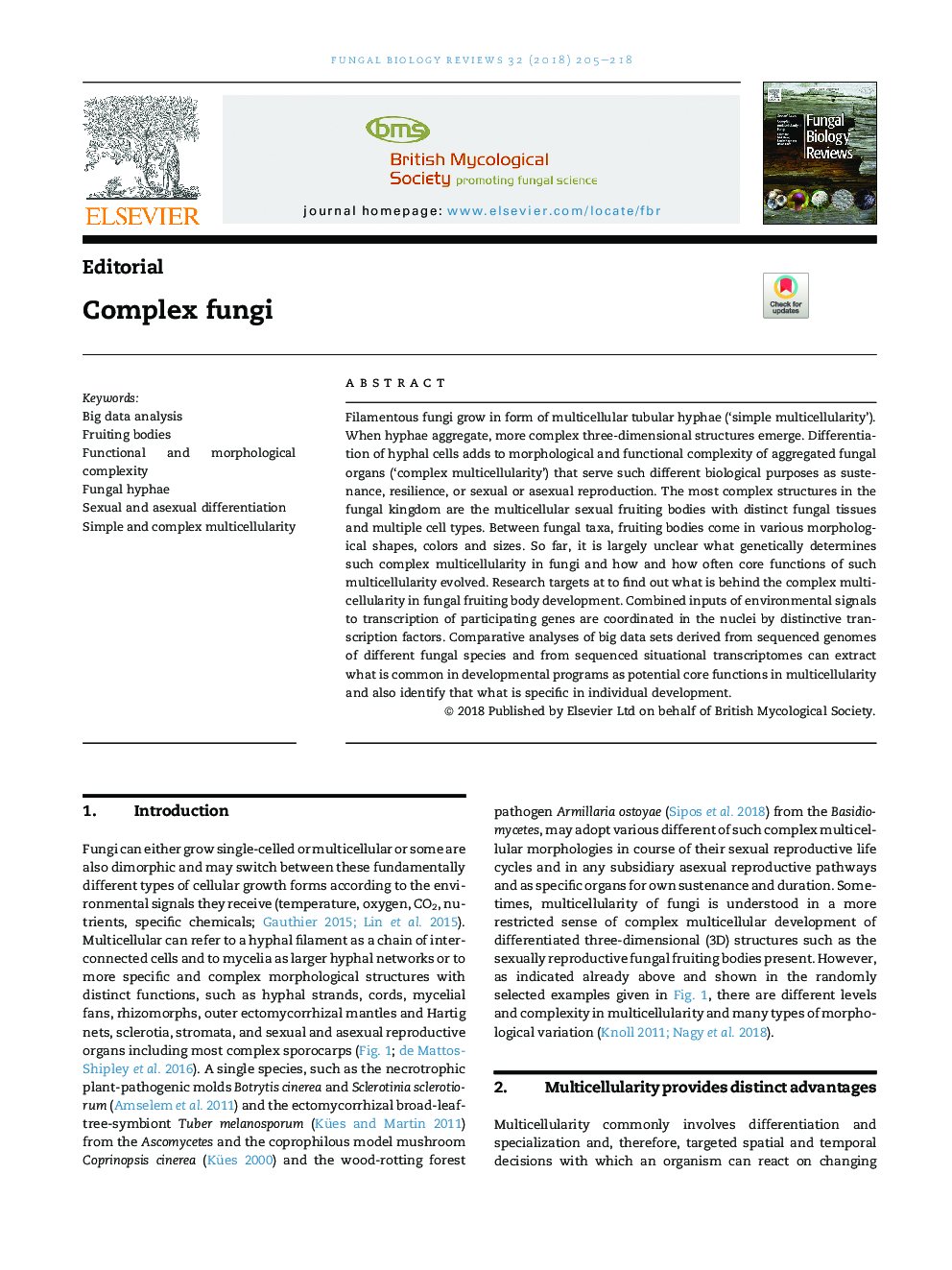| Article ID | Journal | Published Year | Pages | File Type |
|---|---|---|---|---|
| 10157857 | Fungal Biology Reviews | 2018 | 14 Pages |
Abstract
Filamentous fungi grow in form of multicellular tubular hyphae ('simple multicellularity'). When hyphae aggregate, more complex three-dimensional structures emerge. Differentiation of hyphal cells adds to morphological and functional complexity of aggregated fungal organs ('complex multicellularity') that serve such different biological purposes as sustenance, resilience, or sexual or asexual reproduction. The most complex structures in the fungal kingdom are the multicellular sexual fruiting bodies with distinct fungal tissues and multiple cell types. Between fungal taxa, fruiting bodies come in various morphological shapes, colors and sizes. So far, it is largely unclear what genetically determines such complex multicellularity in fungi and how and how often core functions of such multicellularity evolved. Research targets at to find out what is behind the complex multicellularity in fungal fruiting body development. Combined inputs of environmental signals to transcription of participating genes are coordinated in the nuclei by distinctive transcription factors. Comparative analyses of big data sets derived from sequenced genomes of different fungal species and from sequenced situational transcriptomes can extract what is common in developmental programs as potential core functions in multicellularity and also identify that what is specific in individual development.
Related Topics
Life Sciences
Agricultural and Biological Sciences
Agricultural and Biological Sciences (General)
Authors
Ursula Kües, Weeradej Khonsuntia, Shanta Subba,
